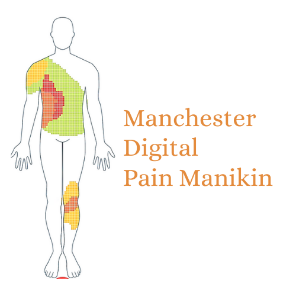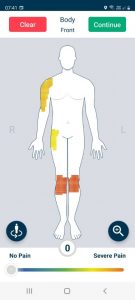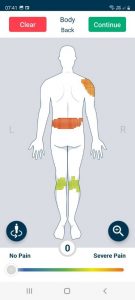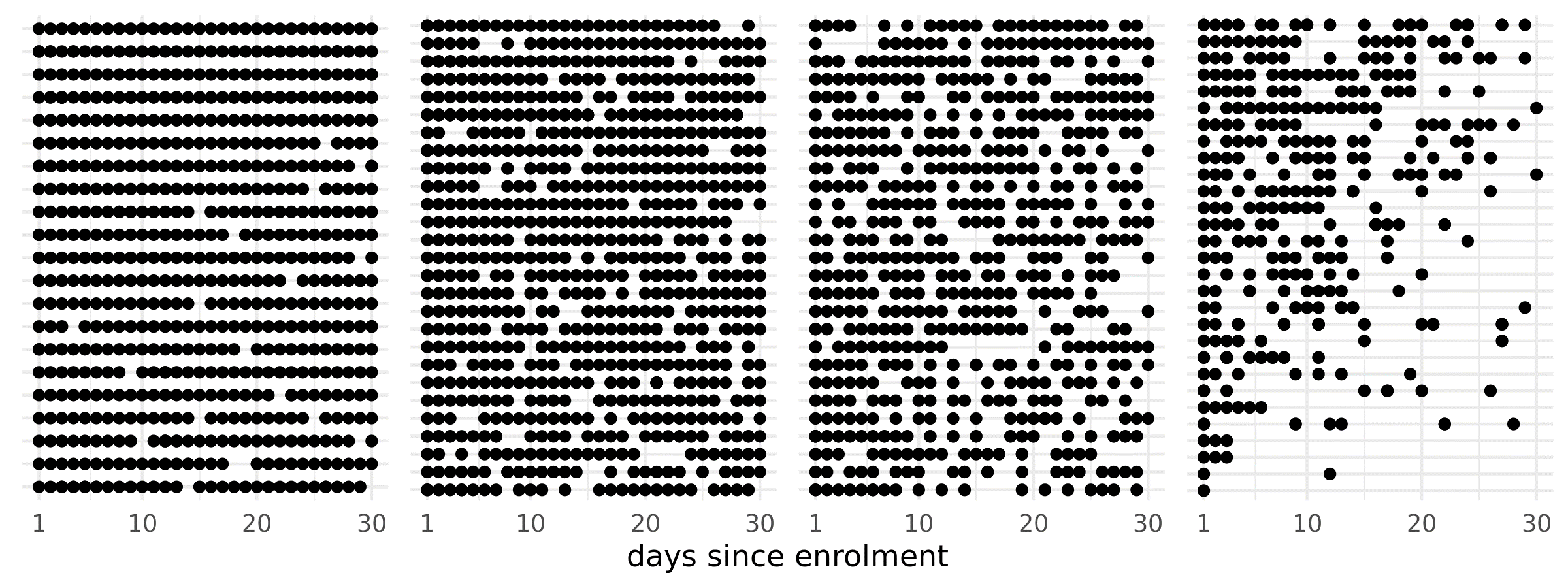 The Manchester Digital Pain Manikin
The Manchester Digital Pain Manikin
Research team: Alessandro Chiarotto, Darcy Murphy, David Wong, John McBeth, Syed Mustafa Ali, William Dixon
Chief investigator: Sabine van der Veer, University of Manchester
Funder: Versus Arthritis & Medical Research Council
Pain is more common among ethnic minority groups in Greater Manchester than among white British. Differences in pain treatment and outcomes may partly be explained by differences in people’s pain beliefs and reporting behaviour (i.e., when, how and to whom people report their pain). This is why, as part of a research programme called the Manchester Digital Pain Manikin, we explored the acceptability and feasibility of daily pain self-reporting using a smartphone app in people with chronic pain across different ethnic backgrounds. The app helps people to better report the location and severity of their pain on a human-shaped figure as shown in Figure 1 below.


Figure 1: Example pain drawing on the front and back of the manikin
As part of the research programme, we:
- Explored (a) how people’s ethnic background influenced their pain experience and reporting behaviour, and (b) how this influenced the acceptability of the Manchester Digital Pain manikin app. We did this by organising workshops with people from white British, black African and South Asian backgrounds;
- Investigated the feasibility of using the Manchester Digital Pain Manikin app for daily self- reporting of pain for people with different musculoskeletal conditions and ethnicities. For this, we recruited 104 people with chronic pain and asked them to report their pain on the app for a month.
In the workshops, we found that preferences for pain self-reporting were similar across ethnic backgrounds, with only some differences emerging with regards to language and manikin personalisation options. In the feasibility study, we saw that most people found it feasible to self-report their pain every day for a month using the Manchester Digital Pain Manikin app. Figure 2 shows participants’ completion levels across 30 days, where each row represents completion level of a study participant; a black dot shows if a self-report of pain was completed for that day. People who were of working age and employed or from ethnic minority groups had the lowest data completion levels. As part of a follow-up study, we will explore this further so that we can increase the app’s acceptability and feasibility for all people with chronic pain, regardless of their age or ethnic background.

Figure 2: Daily engagement of study participants with the Manchester Digital Pain Manikin app
Recruitment approach
For recruiting people from ethnically diverse backgrounds within Greater Manchester, we used a combination of the following approaches:
- Recruited via NHS sites that with large South Asians and African patient groups;
- Displayed study flyers (in English) in local grocery stores to target the Pakistani community;
- Promoted our study on online ethnicity-specific social groups (e.g., for black Africans);
- Offered additional assistance for supporting potential study participants, for example, by explaining the study to them on the phone, and guiding them through how to download, install and use the app on their own smartphone.
- With help from science communication and storytelling professionals, the feasibility study participants generated their qualitative and visual narratives about their pain. We will use these narratives to promote our future studies by illustrating how Manchester Digital Pain Manikin reports can help people express their broader pain experience. You can read those narratives here – MancPainZine_final version_June23
Lessons learnt
From the implementation of the Manchester Digital Pain Manikin study, our key learnings are:
- To increase participation from underserved populations, the need for additional support for each group should be reflected in the project’s budget, planned activities, and timelines.
- Interactive discussions with people of working age across different ethnic minority groups are needed to help us further improve the app design and wider acceptance of our app.
- During the research planning phase, seek help from members of the underserved target groups, for example to help with approaching communities for recruitment and with developing participant-facing materials.
- A broader variety of approaches are required to promote participation in research from ethnic minority groups. For example, older people whose first language is not English may prefer to listen to study information or watch a video rather than read it. Audio-visual study materials, such as instructions on how to use the Manchester Digital Pain Manikin, could be easily be included in the app.
Digital health inequity impact assessment
In collaboration with the University of Toronto (Canada), we will assess the impact on health equity of using the Manchester Digital Pain Manikin for pain self-reporting and management. For this, we will use the Health Equity Impact Assessment Digital Health supplement (HEIA-DH) to systematically identify equity barriers and mitigation strategies.
We will organise focus groups with people with lived experience of chronic pain from manikin users at risk of equity barriers (ethnic minorities, older people, and those from socio-economically deprived areas). Experts in chronic pain, health equity, and digital innovation will also take part in the focus groups.
The results will inform further development and future implementation of the Manchester Digital Pain Manikin as an equitable digital pain self-reporting tool.
